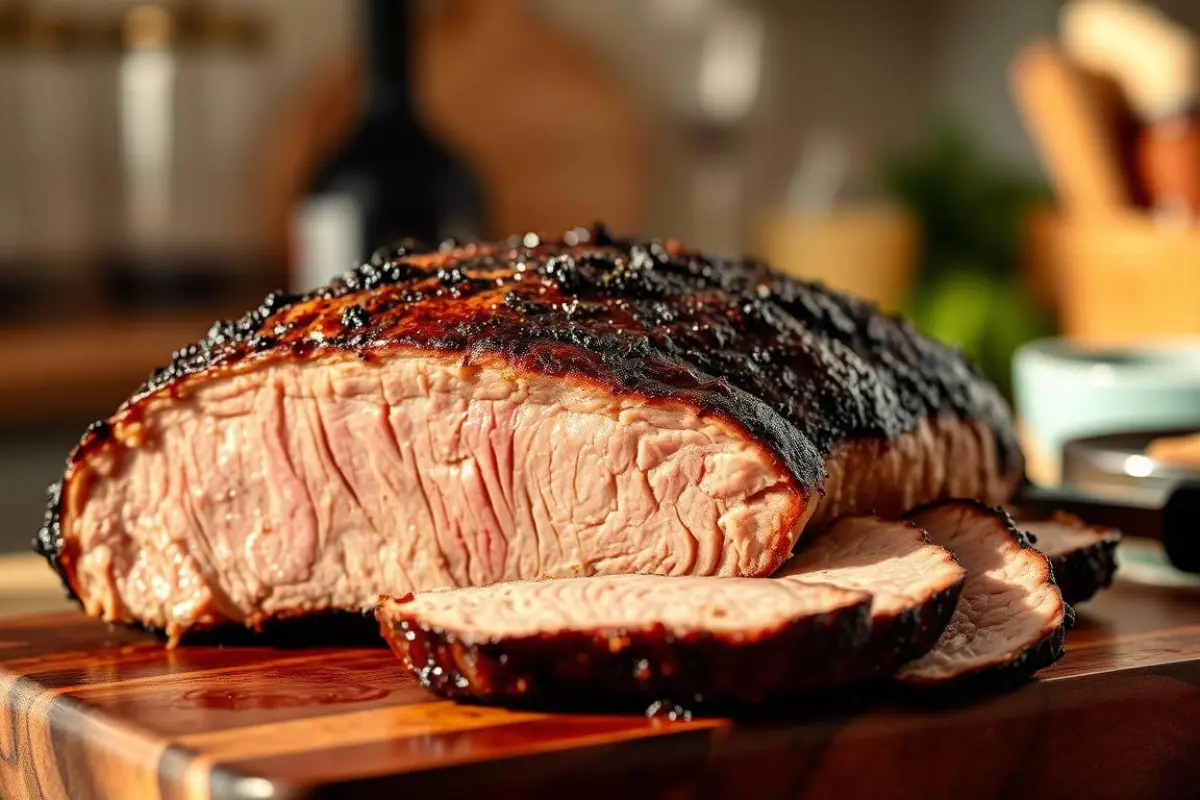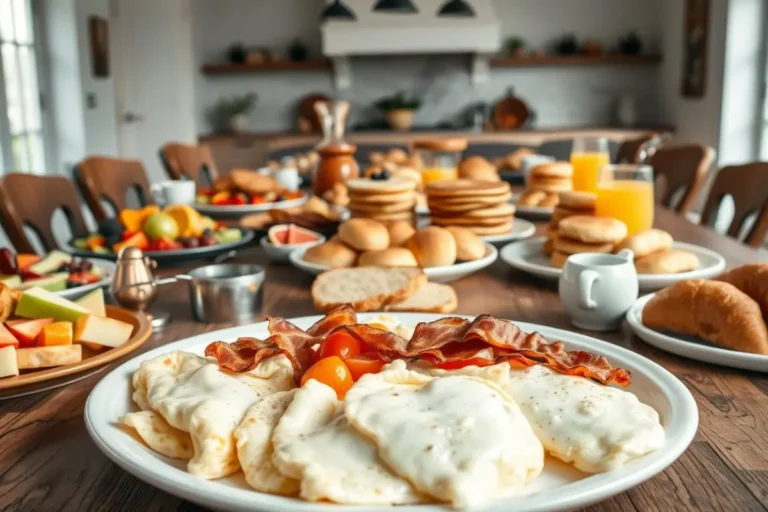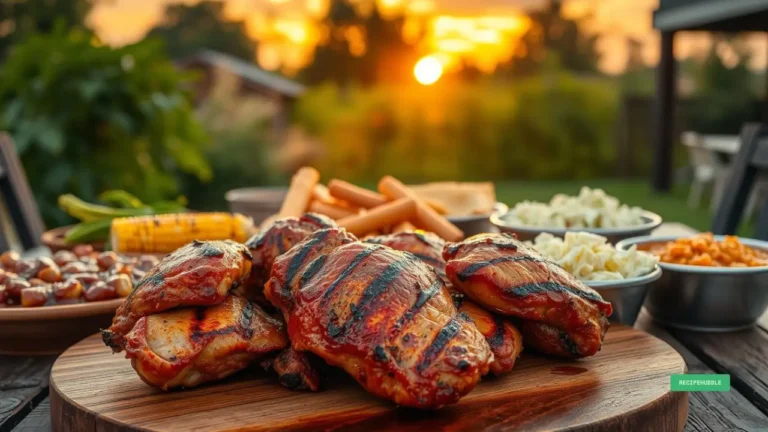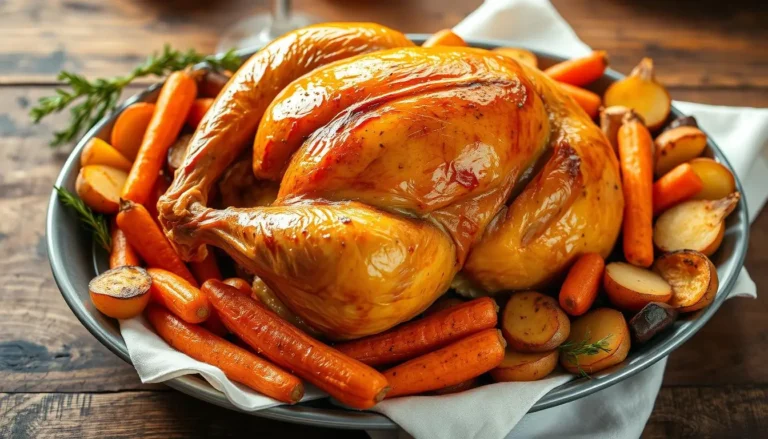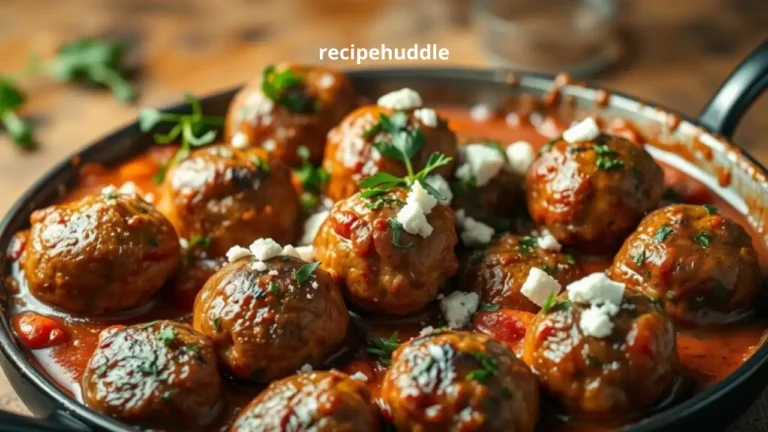Best Grilled Beef Brisket Recipe for Juicy Results
Imagine the sizzle of a perfectly grilled brisket on a warm summer day, the aroma wafting through the air, making everyone’s mouth water in anticipation, Achieving that tender, juicy brisket can seem daunting, but with the right techniques and a trusted grilled beef brisket recipe, you can become the pitmaster of your next backyard gathering.
Cooking a beef brisket on the grill requires some skill, but the payoff is well worth the effort, Whether you’re a seasoned grill master or a novice, this article will guide you through the process, sharing expert tips and tricks to ensure your brisket is always the star of the show.
From preparation to presentation, we’ll cover everything you need to know to create a truly unforgettable dining experience, So, fire up your grill and get ready to impress your friends and family with a dish that’s sure to become a favorite.
Key Takeaways
- Tips for preparing the perfect beef brisket
- Techniques for achieving a tender, juicy brisket
- Expert advice on grilling and cooking brisket to perfection
- Ideas for presenting your brisket to impress your guests
- Common mistakes to avoid when cooking brisket
Understanding Beef Brisket: The Perfect Cut for Grilling
Beef brisket is a staple of barbecue cuisine, known for its rich flavor and tender texture when cooked properly, You might be wondering what makes brisket so special for grilling, The answer lies in its unique characteristics and the various grades available, which can elevate your best grilled brisket recipe to new heights.
What Makes Brisket Special
Brisket is special due to its rich flavor profile and versatility in cooking methods, When slow-cooked or grilled with the right techniques, it becomes tender and juicy, This makes it a favorite for many barbecue enthusiasts, especially those who enjoy a Texas style beef brisket, The key to its appeal lies in the balance of flavors and the tender texture achieved through proper cooking.
Different Grades of Brisket
Brisket comes in various grades, including Prime, Choice, and Select, The grade affects the tenderness and flavor, with Prime being the highest quality due to its marbling, which enhances the juiciness and taste, When choosing a brisket, consider the grade that best suits your needs for that perfect grilled brisket experience, Understanding these grades can help you make an informed decision for your next barbecue, You can also check this detailed guide to USDA beef labels for a clearer understanding of why choosing Prime, Choice, or Select matters for flavor and tenderness.
Essential Ingredients for the Perfect Grilled Beef Brisket Recipe
Grilling a beef brisket to perfection requires a thoughtful selection of ingredients, The quality of your brisket, the blend of your dry rub, and the composition of your marinade all play crucial roles in the final product.
Meat Selection Tips
When selecting a brisket, look for a cut with a good balance of fat and lean meat, This balance is crucial for maintaining moisture during the grilling process, Opt for a brisket with a thick fat cap, as it will help keep the meat tender.
Dry Rub Ingredients
A typical dry rub for brisket includes a mix of spices such as paprika, garlic powder, onion powder, salt, and black pepper, You can also add other ingredients like brown sugar, chili powder, or cayenne pepper to give your brisket a unique flavor.
Marinade Options
For a homemade beef brisket marinade, consider combining ingredients like soy sauce, Worcestershire sauce, apple cider vinegar, and olive oil, Adding aromatics such as garlic, onions, and herbs can enhance the flavor, Here’s a simple marinade recipe:
| Ingredient | Quantity |
| Soy Sauce | 1/2 cup |
| Worcestershire Sauce | 1/4 cup |
| Apple Cider Vinegar | 1/4 cup |
| Olive Oil | 2 tbsp |
Using a homemade beef brisket marinade can significantly enhance the flavor of your brisket, making it tender and juicy. Experiment with different combinations to find your perfect blend.
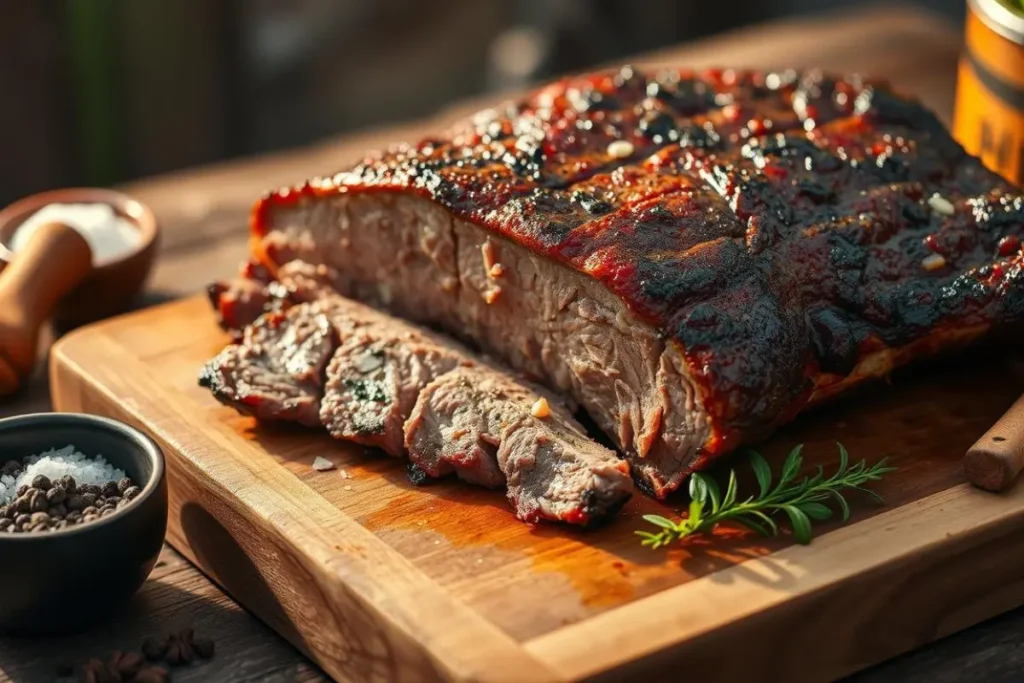
Equipment You’ll Need for Grilling Brisket
Grilling a brisket to perfection requires more than just a good recipe, The right equipment plays a crucial role in achieving that tender, flavorful brisket you’ve been craving, When it comes to grilling brisket, the type of grill you use and the tools at your disposal can make all the difference.
Grill Types and Setup
When it comes to grilling brisket, you have several grill options, Charcoal grills provide a rich, smoky flavor, while gas grills offer more temperature control, Offset smokers are ideal for low and slow cooking, which is perfect for brisket, Whichever grill you choose, ensure it’s set up for indirect heat to prevent burning.
A key aspect of grill setup is maintaining a consistent temperature, For a smoked beef brisket recipe, you’ll want to keep your grill between 225°F and 250°F, This low and slow approach ensures the brisket becomes tender and absorbs all the delicious flavors.
Essential Tools and Accessories
Besides the grill, there are several tools and accessories that can enhance your brisket grilling experience, A meat thermometer is crucial for checking the internal temperature of the brisket, You’ll also need a large cutting board for preparing the brisket and a sharp knife for trimming excess fat.
Other useful accessories include grill gloves for handling hot grates, tongs for flipping the brisket, and aluminum foil for wrapping the brisket during the Texas Crutch method, With these tools, you’ll be well-equipped to follow delicious brisket grilling tips and achieve a mouth-watering result.
| Tool/Accessory | Purpose |
| Meat Thermometer | Checks internal brisket temperature |
| Large Cutting Board | Prepares brisket for grilling |
| Sharp Knife | Trims excess fat from brisket |
| Grill Gloves | Handles hot grates safely |
| Tongs | Flips brisket during grilling |
| Aluminum Foil | Wraps brisket for Texas Crutch |
Preparing Your Brisket Before Grilling
Preparing your brisket is a crucial step that ensures a juicy and flavorful outcome, Before you start grilling, there are several key steps to follow to achieve the best results.
Trimming the Fat
Trimming excess fat from your brisket is essential for even cooking and to prevent flare-ups on the grill, Leave about 1/4 inch of fat to keep the brisket moist, Use a sharp knife to carefully trim the fat, taking care not to cut into the meat.
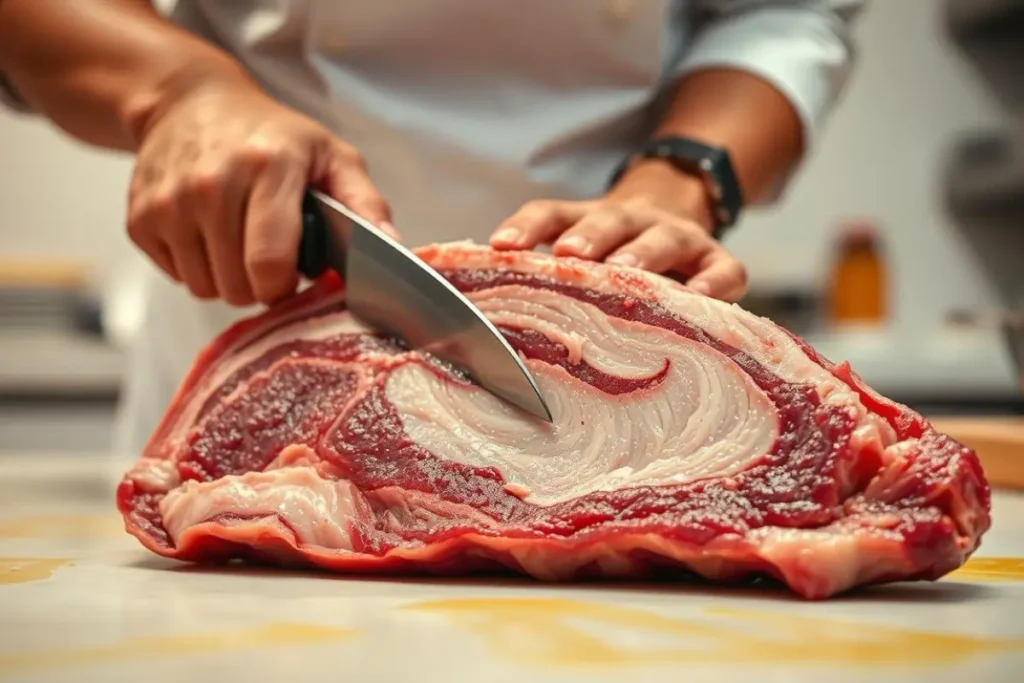
Applying Rubs and Marinades
Applying a dry rub or marinade can significantly enhance the flavor of your brisket, For a dry rub, mix together your preferred spices and herbs, and generously coat the brisket, If using a marinade, ensure the brisket is fully submerged and refrigerated for the recommended time, Allow the brisket to sit at room temperature before grilling to help it cook more evenly.
Resting Times and Temperature Tips
After preparing your brisket, it’s crucial to let it rest before grilling, This allows the meat to relax, making it more tender. Additionally, ensure your brisket is at room temperature before grilling to promote even cooking, For a slow-cooked brisket recipe, consider the resting time as part of your overall cooking strategy to achieve that perfect, juicy grilled brisket.
Step-by-Step Grilled Beef Brisket Recipe
To achieve that perfect tender and flavorful brisket, follow these step-by-step grilling instructions, Grilling beef brisket is a multi-step process that requires attention to detail and a bit of patience.
Setting Up Your Grill
Before you start grilling, ensure your grill is set up correctly, For a charcoal grill, this means arranging the coals to create a heat zone and a cooler zone, For a gas grill, preheat it to achieve a similar temperature variation across the grill surface.
Temperature Control Techniques
Maintaining the right temperature is crucial, Aim for a grill temperature between 225°F and 250°F, This low-and-slow approach ensures the brisket cooks evenly and becomes tender.
Cooking Times and Internal Temperatures
The cooking time will depend on the size of your brisket, A general rule of thumb is to cook it for about 1 hour per pound, The internal temperature should reach 160°F to 170°F for optimal tenderness, Use a meat thermometer to check this.
The Texas Crutch: To Wrap or Not to Wrap
The “Texas crutch” refers to wrapping the brisket in foil during cooking, This method can help retain moisture and promote tenderization, However, it might affect the texture of the bark, Decide whether to wrap or not based on your preference for texture and moisture.
Regional Variations in Brisket Preparation
Different regions have their own twists on brisket preparation, For example, Texas-style brisket is known for its simplicity, using just salt and pepper, while other regions might incorporate various marinades or rubs.
- Preheat your grill to the right temperature.
- Monitor the internal temperature of the brisket.
- Decide on the Texas crutch based on your desired outcome.
By following these steps and considering regional variations, you can achieve a deliciously grilled beef brisket.
Serving Your Brisket: Presentation and Pairings
Once you’ve mastered grilling the perfect brisket, it’s time to think about presentation and pairings, Serving a smoked brisket on grill can be just as important as cooking it, as the presentation can elevate the overall dining experience.
Slicing Techniques for Maximum Juiciness
Slicing your brisket correctly is crucial for maintaining its juiciness, To achieve this, always slice against the grain, This technique ensures that the fibers are cut short, making the brisket more tender and easier to chew.
- Identify the grain direction before slicing.
- Use a sharp knife to make clean cuts.
- Slice to your desired thickness, typically around 1/4 inch.
Classic Side Dishes That Complement Brisket
Pairing your grilled brisket with the right side dishes can enhance its flavor, Classic options include:
- Creamy coleslaw to provide a refreshing contrast.
- Baked beans for a sweet and smoky complement.
- Grilled vegetables to add some color and variety.
These sides are not only delicious but also complement the rich flavor of the brisket.
Storing and Reheating Leftover Brisket
If you have leftovers, storing and reheating them properly is essential, To keep your brisket moist, wrap it tightly in foil and store it in the refrigerator, When reheating, use low heat, either in the oven or on the grill, to prevent drying out the meat.
By following these tips, you can enjoy your brisket for days to come, still maintaining much of its original flavor and texture.
Conclusion: Mastering the Art of Grilled Brisket
Now that you’ve learned the intricacies of preparing a mouth-watering grilled beef brisket recipe, it’s time to put your skills to the test, By understanding the characteristics of brisket, selecting the right ingredients, and mastering temperature control, you’re well on your way to becoming a BBQ expert.
As you continue to practice and refine your techniques, you’ll discover the joy of serving tender, flavorful brisket to your family and friends, Whether you’re a seasoned pitmaster or just starting out, the grilled beef brisket recipe outlined in this article provides a solid foundation for exploring the world of BBQ.
With patience and persistence, you’ll be able to achieve that perfect balance of tenderness and flavor, making your grilled beef brisket recipe a staple at any gathering, So, fire up your grill, and start mastering the art of grilled brisket today!
FAQ
What is the best type of brisket to use for grilling?
The best type of brisket to use for grilling is a whole packer brisket, which includes both the flat and the point, This cut provides a good balance of tenderness and flavor.
How do I choose the right grill for cooking brisket?
You can use either a charcoal or gas grill to cook brisket, but a smoker or a grill with a smoker box is ideal for achieving that authentic smoky flavor, Make sure your grill can maintain a consistent temperature between 225°F and 250°F.
What is the “Texas crutch” method, and should I use it?
The “Texas crutch” method involves wrapping the brisket in foil during cooking to help retain moisture and promote tenderization, You can use this method, especially if you’re new to grilling brisket, but some pitmasters prefer not to wrap their brisket to achieve a crisper bark.
How long does it take to grill a brisket?
Grilling a brisket can take anywhere from 4 to 12 hours, depending on the size of the brisket, the temperature of your grill, and the level of tenderness you prefer, A general rule of thumb is to cook it for 1 hour per pound at 225°F to 250°F.
How do I slice brisket for maximum juiciness?
To slice brisket for maximum juiciness, let it rest for at least 30 minutes before slicing, Then, slice it against the grain using a sharp knife, cutting it into thin slices.
Can I use a dry rub and a marinade together?
Yes, you can use a dry rub and a marinade together, Apply the dry rub first to create a flavorful crust, and then use a marinade to add additional moisture and flavor to the brisket.
How do I store and reheat leftover brisket?
To store leftover brisket, wrap it tightly in foil or plastic wrap and refrigerate it for up to 3 days, To reheat, slice the brisket thinly and reheat it in a low-temperature oven (around 250°F) or on the grill, wrapped in foil, until warmed through.
What are some classic side dishes that complement brisket?
Classic side dishes that complement brisket include coleslaw, baked beans, grilled vegetables, and cornbread, These sides offer a variety of textures and flavors that complement the rich, smoky flavor of brisket.

